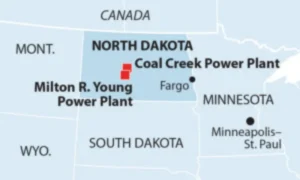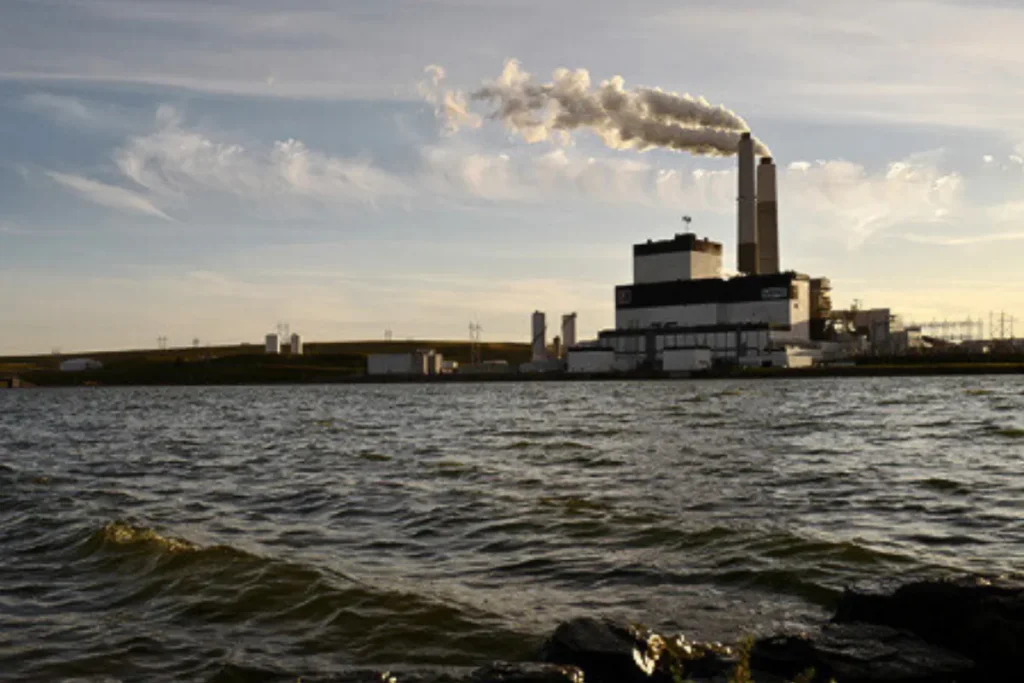
When you hear the name Project Tundra or the phrase “carbon capture utilization and sequestration,” what is the first thing that comes to mind? If you say “Bond-esque doomsday machine,” you wouldn’t be too far off the mark.
Project Tundra is a carbon capture utilization and sequestration (CCUS or CCS) project headed by Minnkota Electric Cooperative at its Milton R. Young coal plant in Center, North Dakota. This long-shot project and experimental technology are only the third of their kind in the entire world.
CCS technology claims to remove carbon from coal plant exhaust and then either sequester it underground in geologic formations or utilize it for “enhanced oil recovery,” more plainly known as fracking with carbon. This technology may sound like science fiction, but many utilities and corporate America are getting excited about this idea. It would allow the continuation of the status quo, operating coal plants, rather than transitioning to wind and solar.
Currently, CCS has many proponents and a federal tax credit, known as 45Q, to help finance it. However, there are many serious concerns with Project Tundra and all CCS projects. This project appears to be an expensive, dangerous pipe dream with possible problems ranging from high electricity rates for utility customers and electric co-op member-owners to uncertainty about carbon leaks.
Recently, the Institute on Energy Economics and Financial Analysis (IEEFA) released a 30-page report, “Project Tundra: A Step in the Wrong Direction,” outlining the multitude of risks associated with Project Tundra. This is IEEFA’s second report on CCS this year.
Here are FIVE MAIN TAKEAWAYS from the report:
Risk #1 | Uncertainty over the cost of adding the carbon capture facility and associated project infrastructure
In 2019, Minnkota estimated in a regulatory document that their estimated cost for the project would be between $1.3-1.6 billion. However, on Project Tundra’s website, a lower $1 billion is presented. IEEFA presents a case that number could be even higher than $1.6 billion.
Risk #2 | Uncertainty about how much CO2 will actually be captured by Project Tundra
IEEFA points out that the proposed technology has never been built at the scale necessary to be applied on the Milton Young Plant. 90% carbon capture has never been proven. In fact, in the two previous smaller applications, both plants failed to meet their lower carbon capture projections.
Risk #3 | Will Minnkota be able to finance Project Tundra entirely with 45Q tax credits?
Minnkota claims that Project Tundra will not impact its member-owners and that the project will be financed almost entirely through carbon capture tax credits. However, IEEFA’s most conservative analysis shows that tax credits will only cover between 57% and 80% of costs, depending on the project’s total price tag. Their analysis further shows that gap would be larger if Project Tundra costs more than $1.6 billion and does not capture it’s claimed 90% of carbon from the plant.
Risk #4 | Uncertainty regarding the cost of capturing the CO2 produced by the Milton Young plant
IEEFA notes that no evidence has been made available for the actual costs of capturing each metric ton of CO2. CCS proponents have claimed the current costs are between $60 and $65 per metric ton. However, the same CCS proponents say that the cost must drop to $30 per metric ton before CCS can be economically viable. IEEFA argues that proponents of CCS are making some misleading assumptions about the cost.
Risk #5 | The Milton Young plant is already an uneconomic coal plant
The price of wind and solar polar are rapidly falling. In comparison, this makes Minnkota’s Milton Young plant is increasingly expensive to run. This costs electric co-op member-owners millions of dollars. IEEFA’s analysis shows that between 2011 and 2019, Minnkota paid $435 million more for power than they would have by purchasing that same amount of wind and solar power through the Midcontinent Independent System Operator (MISO) market. Instead of saving member-owners money buying power through the MISO market, Minnkota continues to run its expensive coal plant. Whether or not Project Tundra is completed, Minnkota’s Milton Young plant’s electricity will still be expensive.


